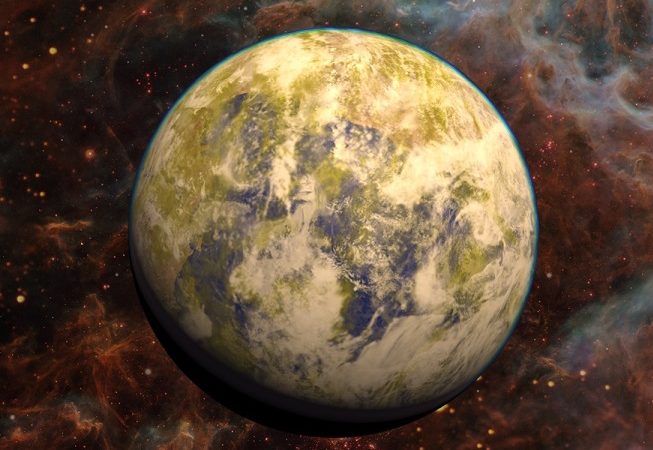Star Gliese 832 holds a habitable planet in its solar system.
An Earth-like planet may be lurking in a star system located just 16 light years away, according to a new research. The star, named Gliese 832, was recently investigated by a team of astronomers searching for additional exoplanets that may be residing between the two currently known alien worlds in this system. A paper detailing the finding was published online on Apr. 15 in the arXiv journal.
Gliese 832 is a red dwarf and has just under half the mass and radius of our sun. The star is orbited by a giant Jupiter-like exoplanet designated Gliese 832b and by a super-Earth mass planet Gliese 832c. The gas giant, with a mass of 0.64 Jupiter masses, is orbiting the star at a distance of 3.53 AU, while the other planet is potentially a rocky world, around five times more massive than the Earth, residing very close its host star—about 0.16 AU.
Now, a team of astronomers, led by Suman Satyal of the University of Texas at Arlington, has reanalyzed the available data on this nearby planetary system hoping to find more extrasolar worlds that may be located in a vast space between the two known planets. The researchers have conducted numerical simulations to check the possibility of existence of other celestial bodies around the red dwarf.
Gliese 832b and Gliese 832c were discovered by the radial velocity technique, from which the scientists extracted the orbital parameters by using the best-fit solutions. These parameters were used as the initial conditions for starting their simulations.
“We also used the integrated data from the time evolution of orbital parameters to generate the synthetic radial velocity curves of the known and the Earth-like planets in the system. Moreover, based on the maximum amplitude of the radial velocity curve obtained from the observation of the inner planet, the approximate mass and distance from the star for the Earth-like planet were computed using the radial velocity signature of the Keplerian motion,” the researchers wrote in the paper.
The team’s computations revealed that an additional Earth-like planet with a dynamically stable configuration may be residing at a distance ranging from 0.25 to 2.0 AU from the star. According to the measurements, this hypothetical alien world would probably be more massive than our planet with a mass between one to 15 Earth’s masses.
“We obtained several radial velocity curves for varying masses and distances for the middle planet,” the astronomers noted.
For instance, if the planet is located around one AU from the star, it has an upper mass limit of ten Earth masses and a generated radial velocity signal of 1.4 m/s. A planet with about the mass of the Earth at the same location would have radial velocity signal of only 0.14 m/s, thus much smaller.
In general, the existence of this possible planet is supported by long-term orbital stability of the system, orbital dynamics and the synthetic radial velocity signal analysis.
The scientists emphasized that their main goal was to provide a general idea to the observers of where and what to look for in this system. They concluded that a significantly large number of radial velocity observations, transit method studies, as well as the direct imaging are still needed to confirm the presence of possible new planets in the Gliese 832 system.
Source: Phys.org

































Leave a Comment
You must be logged in to post a comment.